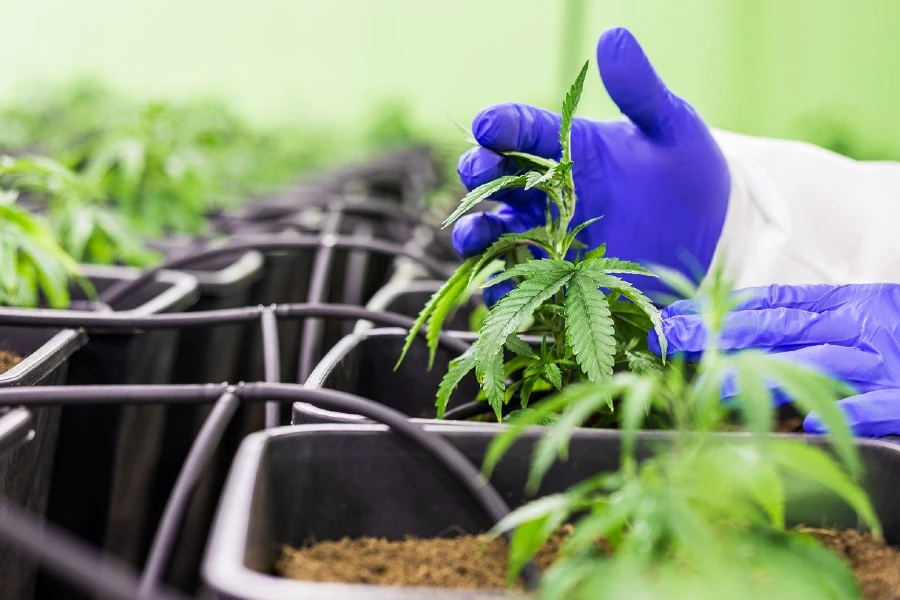To keep an indoor growing environment in good health, the following are some essential factors to take into consideration:
Luminous
Light source: Indoor plants are a terrific way to bring greenery and life into any place. However, they should be provided with an alternative to sunshine, necessary for their development and continued existence. Many people are relieved that artificial grow lights are available on the market and can supply the light essential for indoor plant growth.
LED, fluorescent, and high-intensity discharge (HID) grow lights are some of the available types. Before deciding on a particular variety, gardeners ought to consider the benefits and drawbacks specific to each kind.
LED grow lights, for example, are more energy-efficient and produce less heat than other types of grow lights, making them an excellent choice for compact spaces and plants that are sensitive to heat.
Conversely, fluorescent lights are a popular choice among consumers who are just starting because they are less expensive and generate a broader spectrum of light.
In contrast, high-intensity discharge (HID) lights are the most potent and effective grow lights currently available. They emit a powerful light that can penetrate plants deeply, encouraging their growth and development. However, they can be expensive and require additional apparatus to ensure adequate ventilation and cooling.
Artificial grow lights are an excellent alternative to natural sunshine and can significantly assist indoor plants’ growth and development.
Selecting the appropriate grow light for indoor plants can be challenging, but it is essential to their success. Researching the various types of grow lights currently available on the market and selecting the one that best meets your requirements is of the utmost importance.
Considerations such as the size of the area you have available, the kinds of plants you intend to cultivate, and the amount of money you have available should all be considered.
To summarize, artificial grow lights are an excellent alternative to natural sunshine and can significantly assist indoor plants’ growth and development. It is vital to study and choose the most suitable choice for your particular requirements, whether you decide on HID lights, fluorescent lighting, or LED lights.
If you have the correct grow light, your indoor plants will flourish and develop healthy, bringing beauty and vitality to your living environment.
Cannabis plants, depending on their growth stage.
Cannabis plants, depending on their growth stage, usually require a particular light/dark cycle. This cycle is determined by the light cycle. They may require approximately 18 hours of light and 6 hours of darkness when they are in the vegetative stage. There is typically a need for a light/dark cycle of 12/12 during the blossoming period.
Humidity and Temperature Comparison:
Temperature: The majority of indoor plants flourish in temperatures within a reasonable range, often between 68 and 77 degrees Fahrenheit (20 and 25 degrees Celsius) during the vegetative stage and between 65 and 85 degrees Fahrenheit (18 and 29 degrees Celsius) during the flowering stage.
Humidity: Properly maintaining the appropriate amounts of moisture is vital. Higher humidity (between 60 and 70 percent) is typically beneficial to seedling and vegetative growth. Mold growth can be prevented during flowering by maintaining a humidity level between 40 and 50 percent.
Providing Ventilation and Moving Air Around:
Ventilation: Adequate ventilation is essential to eliminate dead air, excess moisture, and too much heat. It also helps deliver fresh carbon dioxide (CO2), which can be advantageous to plant growth when present in sufficient quantities.
Air circulation: Healthy air circulation helps to discourage the formation of pockets of stagnant air and encourages even growth throughout the plant.
Feeding and Watering: Indoor plants require the appropriate nutrients to maintain a healthy growth trajectory. Several cultivators use hydroponic systems or specialty nutrients explicitly designed for indoor plants. It is essential to delve into the unique requirements of the plant variety that you have selected.
Overwatering indoor plants might be harmful to their health. The watering frequency will vary depending on circumstances such as the size of the plant, the size of the pot, the humidity, and the temperature. Before watering again, waiting until the top layer of soil has had a chance to dry out is better.
To add to the list of considerations:
Monitoring: To maintain optimal growing conditions, many parameters, including temperature, humidity, and pH levels, must be monitored.
Various cannabis strains may have different requirements. Researching the unique requirements of the strain you have chosen can be beneficial.
Keep in mind:
Before you start cultivating any plants, you should always be sure to check whether or not the production of cannabis is permitted in your region. This information is intended for general indoor plant growth and should not be considered a replacement for the assistance of a professional when it comes to producing cannabis.
